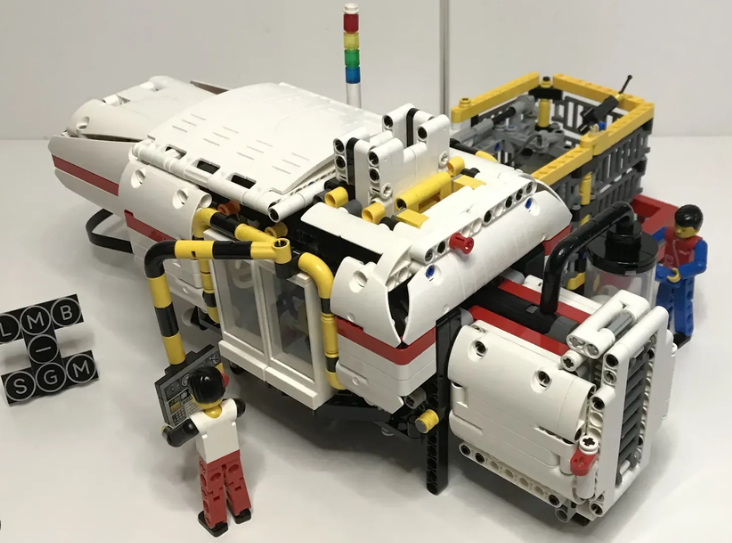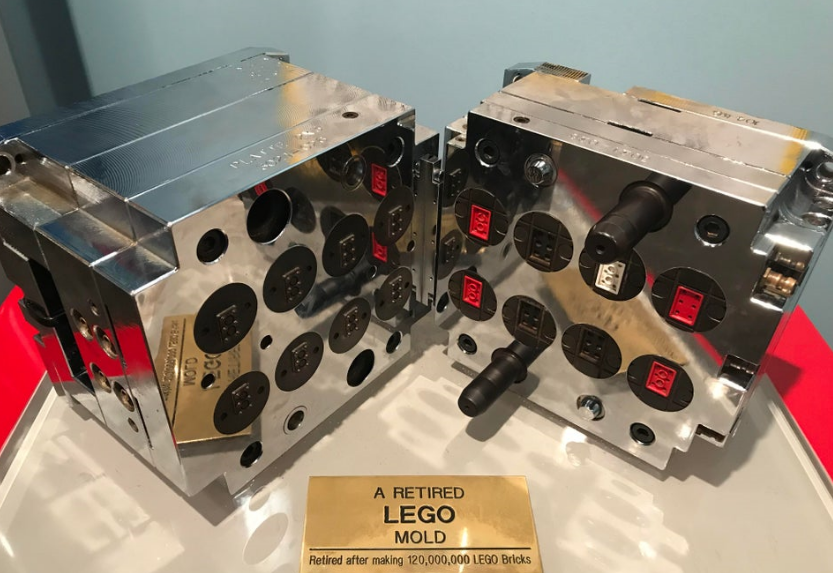Yes, LEGO bricks are injection molded using high-quality ABS plastic, allowing for precision and consistency in production.
The Manufacturing Process of Lego Bricks
Overview of Lego Brick Production
LEGO Bricks demonstrate precision engineering in a highly detailed and controlled production process, starting with the selection of high-quality raw materials, through to uniform, brightly colored building block packaging. Lego bricks demonstrate precision engineering.

Raw Materials Used in Lego Manufacturing
LEGO manufacturers primarily use ABS (acrylonitrile butadiene styrene) plastic for its optimal balance of strength, flexibility, and color stability. This thermoplastic polymer stands out for its:
Rigidity and Gloss: Giving the bricks a smooth, attractive look.
Toughness: Enhancing brick durability and lifespan.
Ease of Coloring: Providing a wide range of vibrant colors.
Despite the higher costs, LEGO’s commitment to quality ensures the use of the best ABS materials.
Step-by-Step Guide to the Injection Molding Process
Preparing ABS Granules: Technicians prepare small-sized granules (around 0.1 to 0.2 grams) for molding.
Coloring Process: They mix the granules with pigments to match LEGO’s signature colors precisely, ensuring consistency across batches.
Heating Phase: The team heats the ABS mixture to about 232°C (450°F) for molding.
Injection Molding: They inject the molten plastic into steel molds under high pressure, designed with extreme precision, maintaining tolerances as tight as 0.002 mm.
Cooling Stage: Rapid cooling follows to retain the bricks’ shape and strength.
Quality Assurance: Specialists measure each brick with up to 10 micrometers accuracy to guarantee perfect fit with other bricks.
Packaging and Distribution: Workers sort, package, and prepare the final bricks for shipping.
LEGO’s injection molding process plays a crucial role in its success, achieving a balance of high efficiency and quality brick production. Despite the process being energy-intensive, technological advancements have enhanced its energy efficiency over time.
Explore ABS plastic and its properties more on the ABS Wikipedia page.
Injection Molding Techniques in Lego Production
Understanding Injection Molding Machinery
Injection molding machines used in LEGO production are highly specialized. These machines must maintain high precision and efficiency, essential for producing LEGO bricks with consistent quality.
| Feature | Description | Specification |
|---|---|---|
| Machine Type | Hydraulic and electric injection molding machines | – |
| Clamping Force | Ensures mold is tightly closed during injection | Ranges from 25 to 150 tons |
| Injection Pressure | Determines the flow of plastic into the mold | Up to 2,000 bar |
| Temperature Control | Precise heating for consistent material flow | Approximately 232°C (450°F) |
| Cycle Time | Time taken for one production cycle | Approximately 7 to 10 seconds per cycle |
Parameters and Settings for Lego Molds
The design and setting of LEGO molds are critical. They determine the precision and quality of the bricks, which LEGO is famous for.
| Parameter | Description | Specification |
|---|---|---|
| Mold Material | Material used to construct the mold | Steel, with high durability |
| Tolerance Level | Precision level of the mold | As tight as 0.002 mm (0.000079 inches) |
| Mold Design | Complex designs for various brick shapes | Custom-designed for each brick type |
| Life Span | Duration of mold usability | Up to 1.5 million cycles per mold |
Quality Control in the Injection Molding Process
Quality control is integral in LEGO’s production. Every brick undergoes stringent checks to ensure they meet the company’s high standards.
| Aspect | Quality Check Method | Standard |
|---|---|---|
| Dimensional Accuracy | Measured to precision | 10 micrometers tolerance |
| Color Consistency | Visual and machine inspection | Standardized color matching |
| Clutch Power | Force required to assemble and disassemble bricks | Consistent across all bricks |
| Durability | Stress and breakage tests | High impact resistance and longevity |
LEGO’s injection molding techniques represent a perfect blend of engineering excellence and production efficiency. The company’s attention to detail in every aspect of the manufacturing process ensures the iconic status of LEGO bricks.
Learn more about injection molding and its applications at Injection Molding Wikipedia page.
Design and Development of Lego Molds
Conceptualization of Lego Brick Designs
The design team at LEGO begins with creative brainstorming to conceptualize new brick designs. They focus on:
Functionality and Playability: Ensuring each design offers an engaging building experience.
Aesthetic Appeal: Creating visually appealing bricks that spark imagination.
Compatibility: Maintaining universal compatibility with existing LEGO sets.
Designers use CAD software to sketch initial designs, emphasizing innovation and user experience.
Prototyping and Testing of New Lego Models
Once designers finalize a concept, LEGO creates prototypes. This phase involves:
3D Printing of Prototypes: Producing tangible models for hands-on evaluation.
Rigorous Testing: Assessing the prototype’s strength, flexibility, and durability.
User Feedback: Conducting trials with target groups, often involving children, to gauge playability and appeal.
Each prototype undergoes multiple revisions based on test results and feedback, refining the design to perfection.
Adaptation of Designs for Injection Molding
Adapting designs for injection molding is crucial. Engineers ensure:
Mold Feasibility: Adjusting designs to suit injection molding constraints.
Precision Engineering: Designing molds with high accuracy, often within 0.005 mm tolerance.
Material Selection: Choosing suitable plastics that meet LEGO’s quality and safety standards.
This stage is vital to transform imaginative designs into mass-producible LEGO bricks that maintain the brand’s renowned quality.
Speed and Efficiency: The adaptation process is efficient, often taking weeks to months, depending on the complexity.
For more insights into LEGO’s design principles, visit the LEGO Design Wikipedia page.
Materials Science in Lego Brick Manufacturing
Properties of Plastics Used in Legos
LEGO primarily uses ABS (acrylonitrile butadiene styrene) for its bricks. This plastic stands out for its:

- Strength and Durability: Ensuring long-lasting toys.
- Flexibility: Preventing breakage under stress.
- Color Retention: Keeping bricks vibrant after years of use.
ABS’s melting point is around 105°C, ideal for LEGO’s injection molding process.
Sustainability and Environmental Considerations
LEGO actively seeks sustainable solutions:
- Recycling Initiatives: Implementing programs for recycling used bricks.
- Energy Efficiency: Striving to reduce the carbon footprint in manufacturing.
- Sustainable Packaging: Transitioning to eco-friendly packaging materials.
Costs are higher for these initiatives, but LEGO commits to environmental responsibility.
Innovations in Bioplastic Materials for Lego Bricks
LEGO explores bioplastic options:
- Material Research: Testing materials like PLA (polylactic acid) derived from renewable resources.
- Performance Matching: Ensuring bioplastics meet the same standards as ABS.
- Biodegradability: Focusing on end-of-life environmental impact.
Bioplastic use is challenging due to cost and performance requirements, but LEGO continues to invest in research and development.
LEGO’s commitment to material science reflects its dedication to quality and environmental stewardship. The brand continually evolves, balancing performance with sustainability.
Discover more about LEGO’s material science approach on the LEGO Group Wikipedia page.




